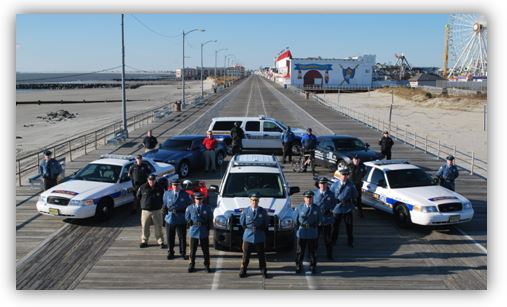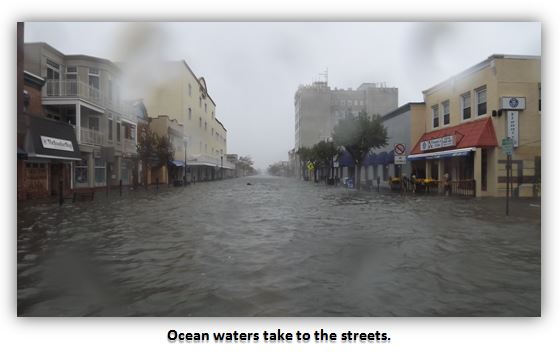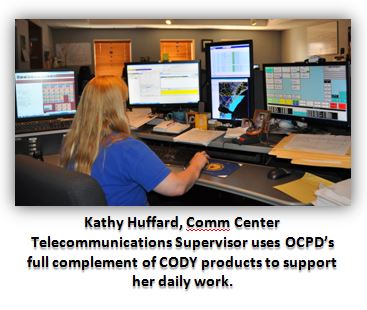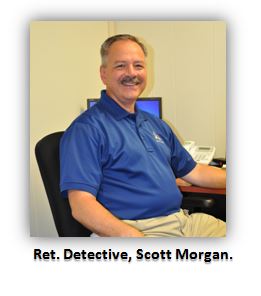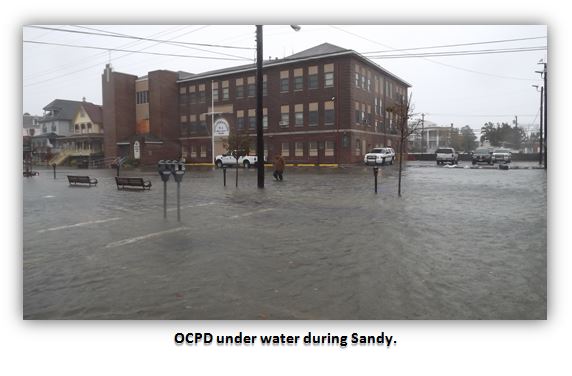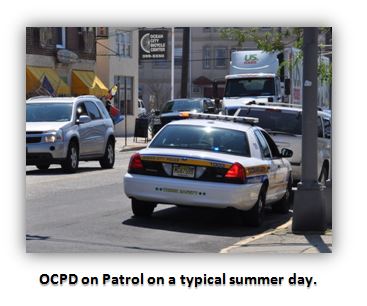 Ocean City, NJ Police Department
Ocean City, NJ Police Department
End-to-End RMS/CAD Solution
In nature, as in life, timing is everything. When the eye of the moisture-laden tropical storm made landfall just five miles north of the summer resort community of Ocean City, New Jersey on the evening of October 29th 2012, it was greeted by high tide and a full moon. On a barrier island surrounded completely by water, Ocean City was a prime target for Superstorm Sandy.
When the storm finally passed the next day, most of the damage and loss of life from Sandy was felt further up the New Jersey Coast and across the New York metropolitan area. But Ocean City didn't escape Sandy's fury. Winds exceeding 70 miles per hour and three separate tidal surges left more than $400 million in damage to the barrier island's commercial and residential property and an estimated $20 million in damage to the city's famed boardwalk and other municipal infrastructure and facilities.
But even with flooded streets and homes, and downed electrical wires everywhere, there was fortunately no loss of life or serious injury. A large share of the credit for that goes to the Ocean City Police Department Communications Center. The Comm Center is the Public Safety Answering Point (PSAP) for 911 calls from Ocean City and the neighboring mainland communities of Upper Township and Corbin City. From the Ocean City Police Department headquarters, the Comm Center's staff of 10 full-time and 5 part-time telecommunicators also dispatch for the department's patrol division, as well as fire and EMS in all three jurisdictions.
For Ocean City's citizens and public safety professionals alike, the Comm Center became the "eyes and ears of the storm" and the center of action for handling calls and dispatching resources before, during, and after Sandy. A core team of dispatchers staffed the Comm Center for three days - eating and sleeping off-shift in the building - before relief could arrive from the mainland two days after the storm. "Along with everybody else in our public safety and emergency management departments, they stepped up and did an outstanding job," says Ocean City Police Chief Chad Callahan. "In times like this, 911 is the one number people know to call. The phones were constantly ringing and they handled thousands of calls, but they maintained their composure and displayed great professionalism and patience."
A Different Kind of Technical Support
The Comm Center and the entire department also relied on the technology that supports them every day to get them through the storm. Since 1999 the centerpiece of that technology support has been an integrated public safety solution from Pennsylvania-based CODY Systems. It includes a powerful RMS (CODY Desktop™) and an integrated CAD module (CODY Dispatch™). CODY has helped the Comm Center and the whole department work smarter and certainly proved its worth over and over again throughout Sandy’s torment. That was evident in how successfully the Comm Center managed all the resources assembled to fight the storm. "We look to the Comm Center and CODY to coordinate logistics for us," states Chief Callahan. "For Sandy we had close to 120 first responders involved, including our officers and the city's Fire Department EMTs and Fire personnel. CODY brought it all together for the dispatchers. They could see on one screen who was on duty and who was available across both agencies. That gave them a real advantage in a chaotic time."
CODY Dispatch is also integrated with the Comm Center's 911 call answering system so that name and address information from land line-based calls automatically populates in CAD. With the unusually high volume of calls the Center handled during Sandy, features such as these that save dispatchers time in entering information and dispatching emergency response became ever more crucial. Plus, CODY is fully outfitted with a geographic information and mapping solution that presents dispatchers with a map view right on the CAD workstation. They can see the incident location, as well as the current location and status of all responders in the field. The result is more intelligent assignment and faster response based on proximity - both of which are of utmost importance when dealing with heightened danger to both residents and officers.
Information from a call for service or incident input into CODY Dispatch at the Comm Center is immediately and automatically available to the responding officer, who can add detail on the service or incident response through CODY Desktop without having to re-key data already entered. Through CODY Desktop they can access vital information on residents, vehicles, businesses, and more in real-time. Related files, images, sound waves, and other supplemental documents can be attached to records to maintain comprehensive information in one location. This is made possible because all the information is stored in one relational database which promotes rapid search and retrieval.
Preparing for the Storm
In preparation for the storm, Kathy Huffard, the Comm Center Telecommunications Supervisor, notes, "we compiled a list of the CODY Dispatch call types pertinent to a storm, like evacuation and transport, which we don't see on a normal day so the dispatch staff had them at their fingertips." As the storm approached, the Comm Center team also used the information in CODY to help flag people needing special assistance. "We were able to identify people with potential evacuation needs based on prior medical transportation or other service recorded in the system," she recalls. "Our staff then called every one of them to find out if they were still on the island and if they needed help."
Scott Morgan, IT Systems Administrator for the Ocean City Police Department and Deputy Director of the city's Office of Emergency Management, also emphasizes that "it's important to document call for service and response information immediately and accurately because we need it for FEMA purposes. When there's a Presidential declaration of a disaster, as there was with Sandy, you have to substantiate manpower hours in your request for reimbursement. CODY certainly helped us with that."
Getting the Message Out
The city's Emergency Notification System played a large role in preparing residents for the storm. The system includes a "reverse 911" feature for sending voice messages to all land line phones registered in Ocean City, as well as the ability to send emails to citizens who had signed up on the city's web site. Critical information like storm forecasts, evacuation routes, bridge closure plans and shelter locations was broadcast to more than 25,000 people.
Although "low tech" by today's standards, the city's siren and public address system, which is tied into the Comm Center, proved invaluable. "On that Monday, just before the storm hit, we realized there were still people on the island who planned on riding it out," recalls Scott Morgan. "Kathy and I broadcast a warning over the system, which covers most of the city. Later I spoke to several residents at the evacuation staging center who said they didn't take Sandy seriously until they heard a real person's voice over the PA and it 'scared the hell' out of them."
There were also several hundred who needed transportation and temporary housing. The city's volunteer Community Alert Response Team (CERT) provided invaluable assistance before, during and after the storm. Its members manned emergency shelters in several mainland locations for more than 125 evacuees. They also assisted in evacuating - and then resettling - 450 residents of a nursing home on the island who were transported to another facility. "I couldn't be more proud of our volunteers and all they did," says Scott Morgan, who, in his OEM role, is responsible for recruiting and training CERT members.
Entering the "Emergency Realm"
Except for the loss of Internet and cable television service for several hours during the storm, the Comm Center team had the technology support they needed. "We did lose power but our generators kicked right in, our servers stayed up and running and we had CODY and wireless connectivity with our patrol vehicles throughout the event," says Scott Morgan. "Everything worked flawlessly."
But the storm put unique demands on the Comm Center staff. "We entered what I call the 'emergency realm'," Scott Morgan explains. "It all shifts. You don't get the normal, everyday calls for service, but you get slammed with other types, including downed wires, tripped burglar alarms and electrical fires." By far the most frustrating part of the Sandy experience for the Comm Center staff was dealing with residents who had decided to remain in place and ride out the storm. "As the water rose some people became hysterical and started to panic," says Kathy Huffard." Some of them had special needs that affected their mobility. We did our best to reassure them until we could get them help." And getting that help to them was often a challenge. In addition to streets made impassable by water and sand and the danger of downed power lines, under the OSHA standard the department follows, personnel are not allowed to respond to an emergency when sustained wind speed is greater than 40 - 45 mph, as it was for several hours that night." In all our broadcasts before the storm we advised people that they might not be able to get an ambulance or other emergency service if they stayed," Scott adds. "We won't put our people in harm's way."
Superstorm Sandy moved on the next day, but the Comm Center was by no means back to normal. "Wednesday, the day after that was actually our busiest day," says Kathy Huffard. "Many of the calls were from homeowners asking about conditions on the island and when they could return. We had reduced our staffing thinking that we would get fewer calls after the storm, but we got inundated and had to bring more people back in." But not all calls were informational in nature. "In the aftermath of Sandy we got calls from people trying to locate relatives they couldn't reach because power was out, phone lines were down and the bridges were closed," she explains. "In some case they weren't even sure they had left the island. Fortunately, through CODY we could research the transports we did and tell them immediately if and where we had taken the person."
In addition to its role in producing the data for FEMA, "CODY really helped in keeping track of reports of downed wires," Kathy observes. When the utility people were allowed back on the island to begin repair, "we were able to use the information in CODY Dispatch to immediately tell them where wires were down and which ones were a priority based on location."
Preparing for the Next Superstorm
Despite the damage that Sandy caused, the city's emergency management leaders recognize that it could have been much worse. "We were lucky," Scott Morgan says. "We hope when we do get a direct hit, we'll be able to sustain ourselves." A key part of that is educating people on how to prepare themselves with information like the Guide to Hurricane Preparedness & Evacuation distributed to all residents by the city's Office of Emergency Management.
The Sandy experience also reinforced the value of planning and coordination between emergency management staff in Ocean City and Upper Township, its mainland neighbor and location of two emergency shelters for Ocean City residents during the storm. "We learned that decisions like the timing of bridge closures affect both communities," Scott explains, so they're working together on joint operational procedures for the next emergency. "We've always had a great relationship with Upper Township, but it's even stronger as a result of Sandy," he observes.
And Scott indicates that there are things the Comm Center and the police department as a whole can do to prepare. From a technology perspective, he expects that the Comm Center will have Next Generation 911 service before the next big storm. "We're ready to go as soon as the state turns it on," he says. "We have the technology already in place." Getting text, photos and video and being able to attach them electronically to the call record in CODY Dispatch "definitely would help," according to Kathy Huffard, but in an emergency like Sandy "you'll need additional personnel to handle all the different ways people will be able to communicate with us."
CODY will continue to be the backbone of the department's technology for handling emergencies like Sandy, as well day-to-day operations. In fact, the system is being expanded to provide CODY RMS access to the city's Fire Department personnel in the field. "Having everyone using the same software is really important," maintains Scott Morgan. "We'll collect more information when both departments respond to the same incident, and we can share the same information seamlessly."
“Plus,” Scott adds, “training and supporting these new departments will be easier than ever with the new CODY Customer Resource Center and the new training options we have." The CRC gives all CODY customers web access to over 50 interactive eLearning training sessions with online proficiency testing and ‘quick tip’ videos to keep CODY users informed. "Our dispatchers have used it already for refresher training and we're extending it to all our officers," he points out.
Scott thinks of the CRC as a "quality assurance module" for the department. "Getting the right information on a person or an incident into the system is key," he maintains. "Otherwise the next person using that information will be lost. We have to continuously reinforce that quality message through training, and we're addressing that through CODY."
Chief Callahan agrees: "Providing our officers with timely and accurate CAD and RMS information they need in the field gives them the power to better do their jobs. We are excited about continuing our partnership with CODY to further enhance our department-wide policing capabilities."
To learn more about this project, please feel free to contact:
Scott Morgan, IT Systems Administrator for OCPD and Deputy Director of OC's Office of Emergency Management, at 609.399.0202 or smorgan@ocnj.us

